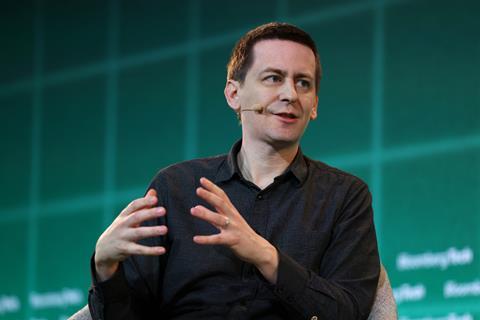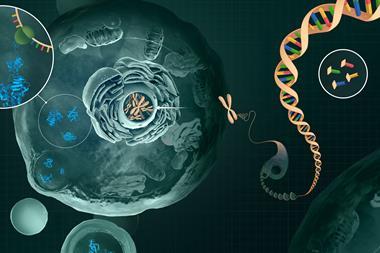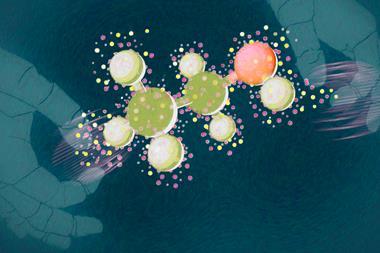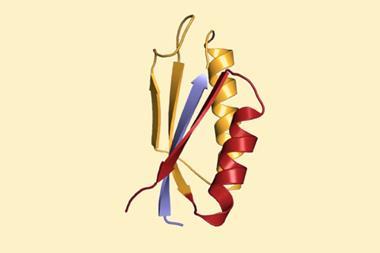The director of Google DeepMind and newly-minted chemistry Nobel laureate, John Jumper, has said that protein prediction programs like AlphaFold are just the start of artificial intelligence in biology and beyond.

‘I really do hope that in time we will see AlphaFold as one of the first AI systems that deeply mattered [for] biology but just one of many, many that did,’ Jumper said during a symposium to honour this year’s Nobel prize laureates at the Swedish embassy in Washington DC held in partnership with the US National Academy of Sciences (NAS).
AlphaFold 2 can predict the three-dimensional structure of a protein from its amino acid sequence after being trained on huge sets of structures. ‘AlphaFold is an AI system that can do what humans can’t do,’ Jumper explained. ‘If we need the structure of a protein we have to go along this possibly years-long experimental path. And so we were able to develop a series of innovations in machine learning, basically developing the right types of building blocks and tools for machine learning on proteins in order to be extremely accurate, to get competitive to – not quite as good at but very close to – experimental accuracy. We are able to do this in about five or 10 minutes instead of in a year.’
Jumper said that Alphafold is now making progress when it comes to enzyme structure prediction within a cell. He noted that the latest version of AlphaFold – AlphaFold 3, which was announced in May – can accurately predict binding between proteins and small molecules.
‘Of course, this type of protein–small-molecule interaction is key to understanding – mechanistically – enzyme function,’ Jumper explained. ‘It remains to be seen exactly how far we can push this,’ he added. ‘AlphaFold will only tell us some [things] about biology and there is so much more – about the cell, about interactions, about the mesostructure, about regulation – that isn’t directly even askable with the AlphaFold framework, so we have to think about how we are going to get out to cell–cell interactions.’
Right now, Jumper said, advances using AlphaFold depend on ‘incredibly bright scientists’ examining predicted structures and considering the wider cellular processes. ‘How do we start to bring that into the domain of AI and machine learning, and what are those problems going to look like? What data are those going to be based on?’ he asked. ‘I am very excited to see how this grows outward in scale, hopefully getting us closer and closer to phenotypes.’
At the event, the president of the NAS, Marcia McNutt, expressed concern about the future of US science. She noted that there were eight American Nobel laureates this year, recalling that the US has dominated the Nobels since the second world war. ‘We are world-leading,’ she stated, estimating that the nation has earned more than half of all the science Nobel prizes ever awarded.
Lessons from history
However, McNutt pointed out that before the second world war, Germany claimed the most science Nobels. ‘And what did Germany do to lose its first place?’ she asked. ‘It did it to itself – it wasn’t exactly competition elsewhere but think of all the German scientists that left Germany in the ramp-up to World War II – most of them Jewish researchers, top-notch intellectuals, who recognised that their lives were going to be on the line if they stayed in Germany.’
However, McNutt warned that Nobel prizes are a lagging indicator of a country’s research and technology environment because very often the work leading to the pivotal discovery was carried out a decade or more earlier. ‘I am worried that at the time we start seeing fewer Nobel prizes coming to the US we will have already lost our edge, maybe as much as a decade before,’ she cautioned.
Immigration is critical to the US’s success and must be something that the government continues to support, McNutt said, noting that nearly 30% of all Nobel prizes won in the US went to first-generation immigrants. It is crucial for the US to continue to attract the best and brightest to win such awards, she argued.
McNutt also emphasised that strong international partnerships are vital for making a nation a strong Nobel prize contender. ‘It used to be, when I was a student starting out … that an individual university would have a high energy physics facility – like Stanford’s linear accelerator, for example – but now an individual institution couldn’t create a leading capability to do new scientific research,’ she stated. ‘And in fact, it has gotten beyond, generally, even the ability of a nation to do that – we have to work on these [projects] internationally and the US has to become a better international partner.’
A third important component to ensuring the US’s scientific pre-eminence is government investment in research and technology development, McNutt added. ‘I am very concerned about the future for the US … because tax cuts typically lead to less investment by the country and, of course, we do have a problem with the deficit, but it is science and technology that is our antidote to the deficit,’ she continued, in an apparent reference to president-elect Donald Trump’s pledge to extend and implement a range of tax cuts. ‘It is through investing in new technologies, new ways to create tools and new advances, that we actually build our tax base,’ McNutt said.
But she suggested that erosion of trust in science is a problem everywhere, especially in the US, and perhaps the most important issue to address. ‘We have to be a trustworthy enterprise and we have to communicate better with the public about why they should trust science,’ McNutt told the audience. ‘Because without the public trust behind us we are not going to make the investments, we are not going to attract the best and brightest from around the world.’

















No comments yet